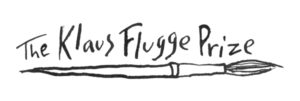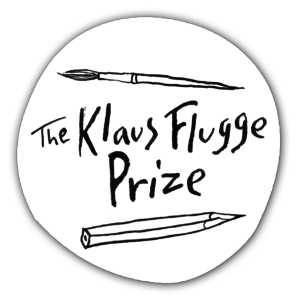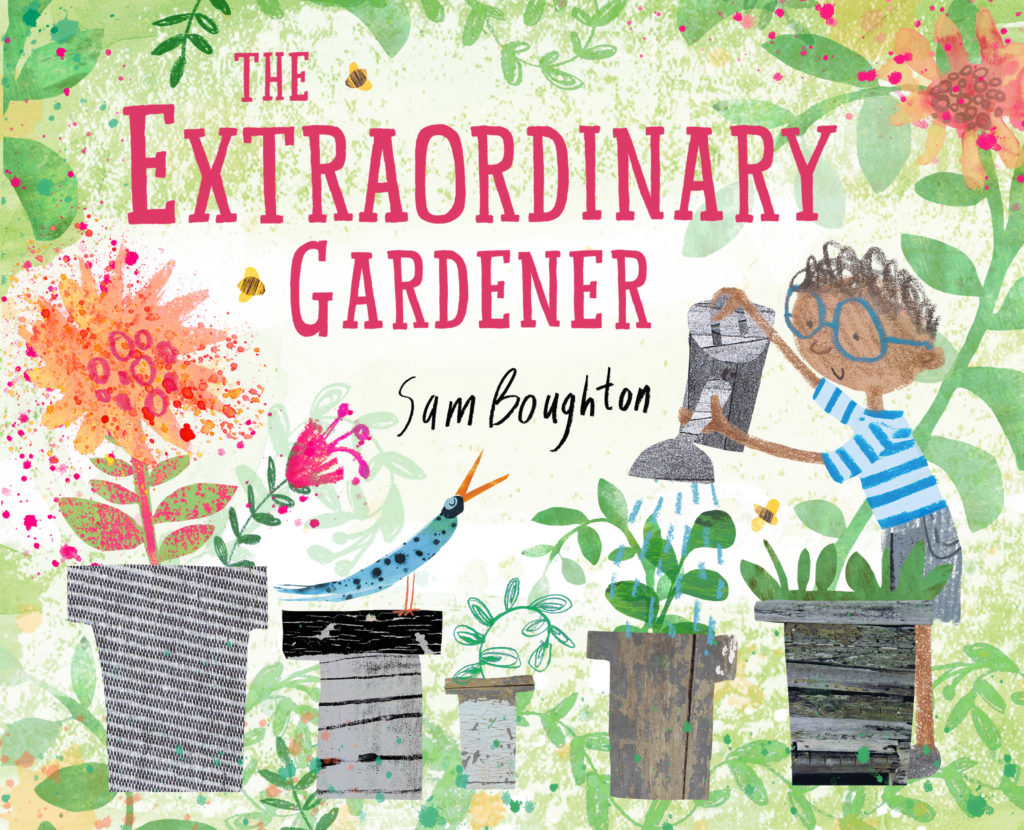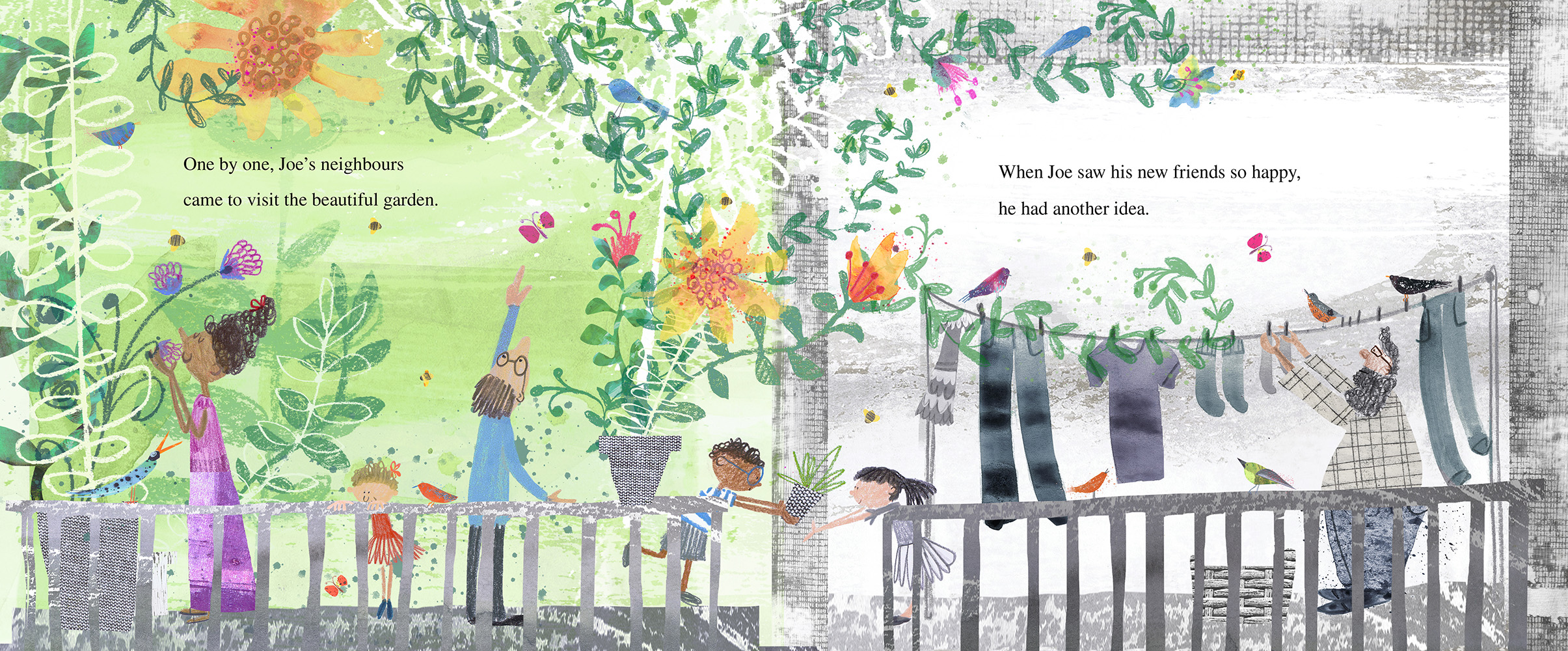
The Extraordinary Gardener, written and illustrated by Sam Boughton
The Extraordinary Gardener written and illustrated by Sam Boughton is one of the six books on the shortlist for the 2019 Klaus Flugge Prize.
The judges praised the exuberance in the artwork, describing the double page spreads as ‘wonderful’. They found Joe’s urban world very appealing and admired the book for its real child appeal.
Here Sam Boughton talks about her technique and discusses one of her favourite illustrations.
This scene shows a pivotal moment in the story, where young Joe witnesses the effect his tiny garden is having on his family and neighbours. He sees their joy and wonder as they take in the scent of flowers and gaze at all the creatures. Their happiness is the catalyst for Joe to reach out to more people. He has such a big heart and wants everyone in the city, even the WORLD, to experience his garden, to feel this joy, no matter who they are. In this double page spread I've used the gutter to divide Joe's apartment which is bursting with life, from his neighbour’s which is quite bland and empty. In the centre we see Joe offering a simple plant. This gesture represents him spreading his good will for change.
Throughout the book I've used colour to represent nature. As Joe’s happiness grows, the colour builds. This scene particularly shows that approach. I felt it was a risky decision as I was worried that children and adults would think it was bland. I hoped they would see I’ve used colour as a tool to tell the message of the story. But I didn't need to worry at all! Everyone completely got it.
I also wanted to tell a story that was empowering for children. To show them that even if they have just ‘one’ small idea, with enough hard work they can make big changes. That their actions count and that community and nature is fundamental to our wellbeing. It felt such an important message to say, especially right now.
I work in a mixture of mediums. I initially use inks to create expressive backgrounds and any large elements such as trees and buildings. I try to stay loose and really experimental at this stage. Lots of splashes and drips and mark making happens. Then on separate paper I draw all the details like flowers, birds and people. I use Caran D’ache Museum Range pencils, as they are soft and give vibrant colours. Finally, this is all scanned in then built up digitally, adding elements of collage for textural quality. My process is quite lengthy and it can take days to achieve the overall effect I’m after. I prefer to still work by hand and not 100% digitally as I like the sketchy quality and the unplanned marks that are scattered over the artwork.
My influences as a child were Richard Scarry books; I loved all the tiny details. Also Eric Carle for the sheer boldness of colour and pattern. As an artist, I now love the work of Andrea D’Aquino, her Alice in Wonderland is a total inspiration and Sabrina Ward, a Canadian artist for her book Spilling Open which is always open in my studio as it's sheer mark making heaven and reminds me everyday to keep loose and experimental!
The Extraordinary Gardener is published by Tate Publishing.

The Klaus Flugge Prize is funded personally by Klaus Flugge and run independently of Andersen Press.
Website maintenance & Copyright © 2024 Andersen Press. All Rights Reserved. Privacy & Cookie Policy.

